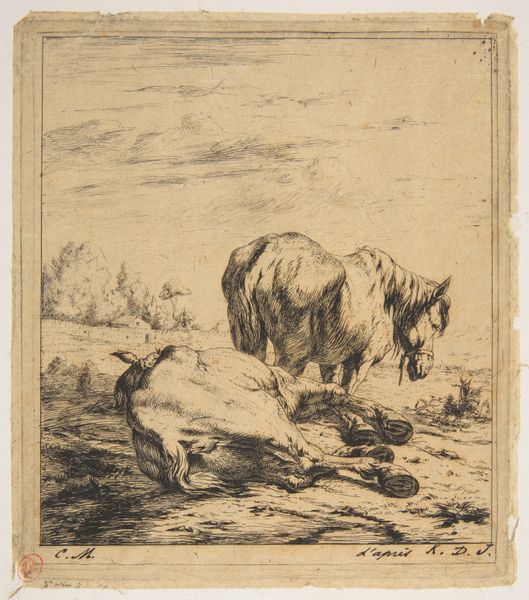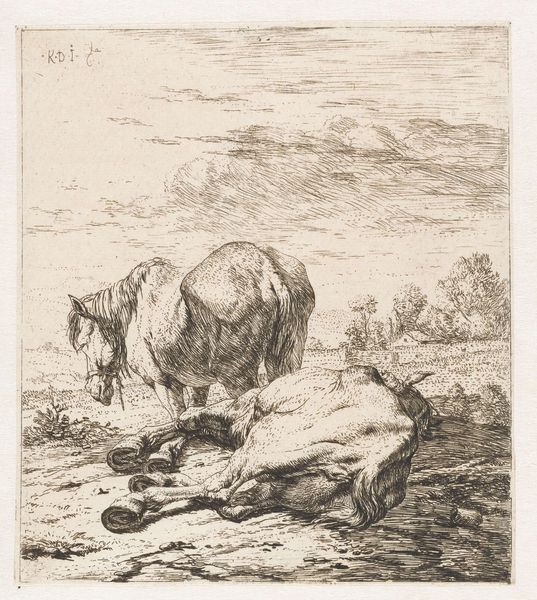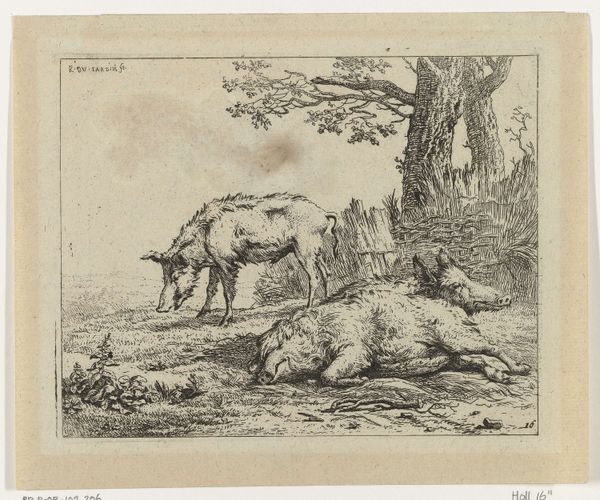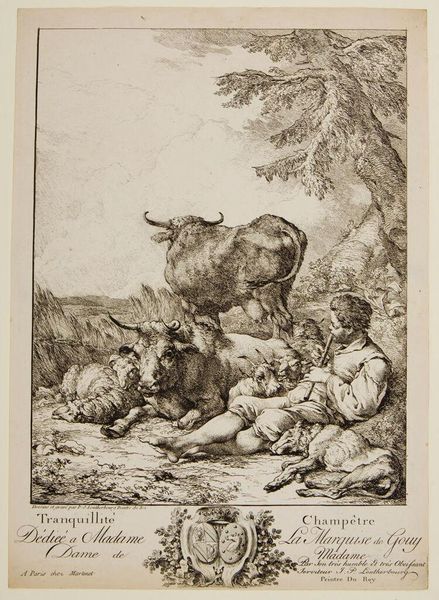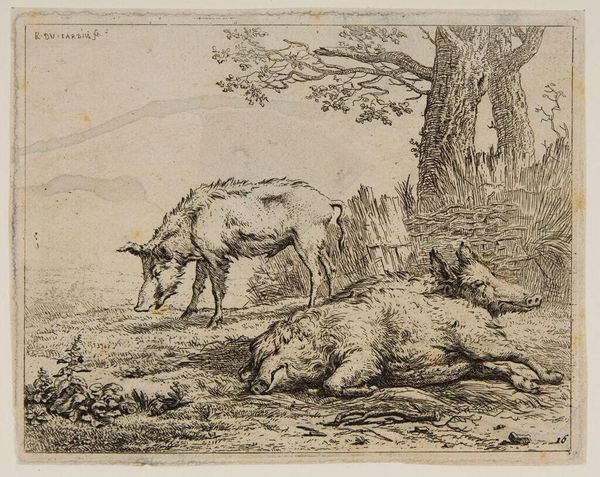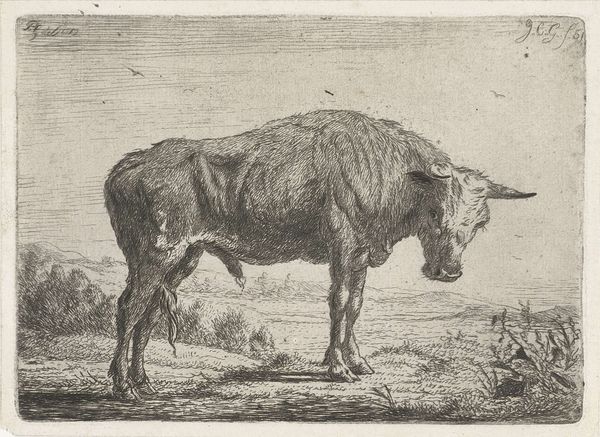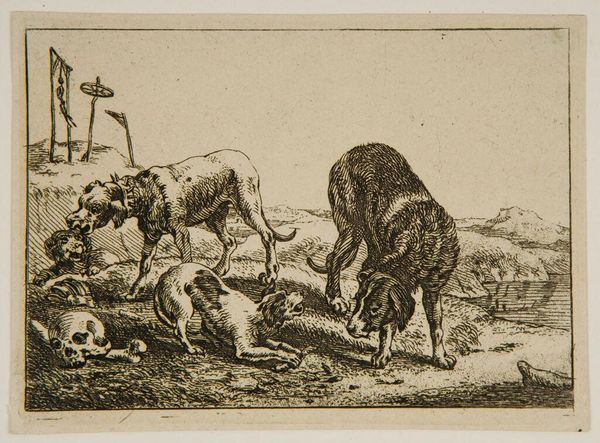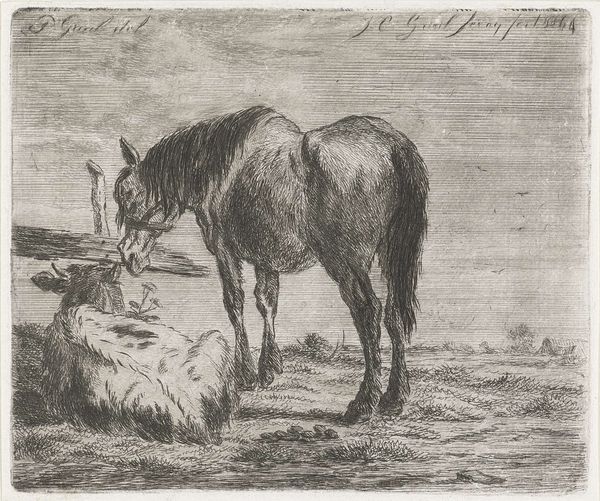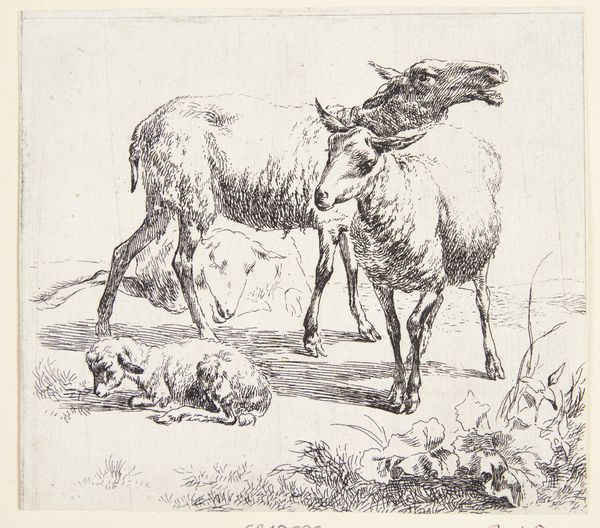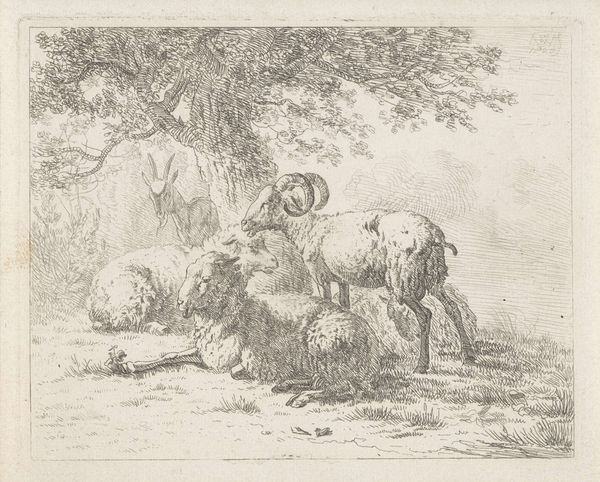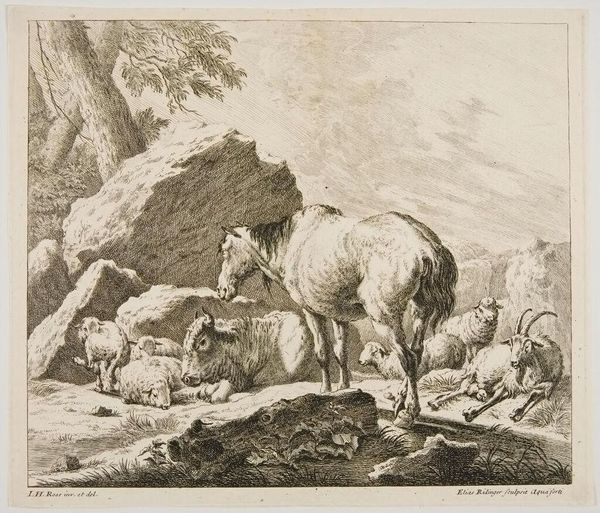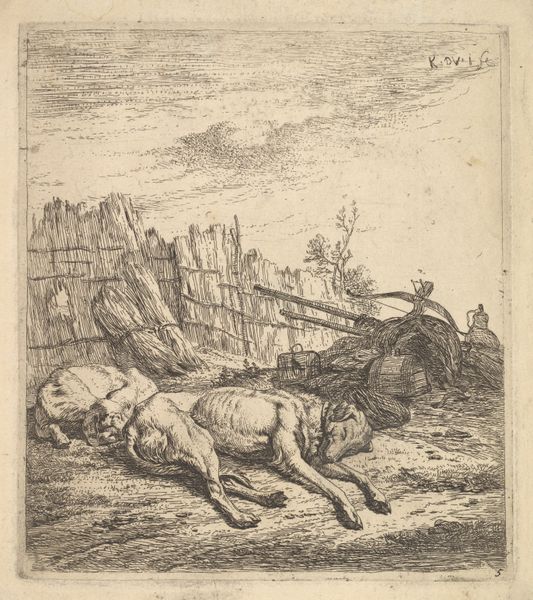
Copyright: CC0 1.0
Curator: Here we have Karel Dujardin’s "Two Horses," a seemingly simple etching. Editor: My first thought is how stark and melancholic it feels, almost desolate. The fallen horse dominates the foreground. Curator: Dujardin, who lived from 1622 to 1678, situates this work within a larger narrative concerning labor and animal exploitation, particularly in the context of 17th-century Dutch society. Editor: Exactly, the etching's lines emphasize the sheer physicality and weight of these creatures, highlighting their use as working animals. The means of production here are so direct: the artist's hand, the plate, the press. Curator: It also speaks to themes of mortality and the cyclical nature of life, reminding us of the systemic violence inherent in societal structures that commodify living beings. Editor: True, and the materiality adds to the sense of realism. The stark contrast between the dark lines and the white paper creates a tangible sense of form and texture. Curator: It's a somber reflection on power dynamics, prompting us to consider our own relationship with animals. Editor: A powerful image indeed, one that makes us consider the labor behind even the most pastoral scenes.
Comments
No comments
Be the first to comment and join the conversation on the ultimate creative platform.

